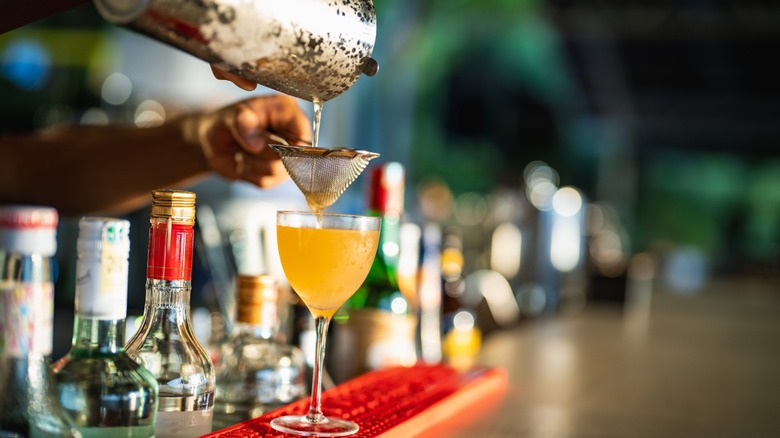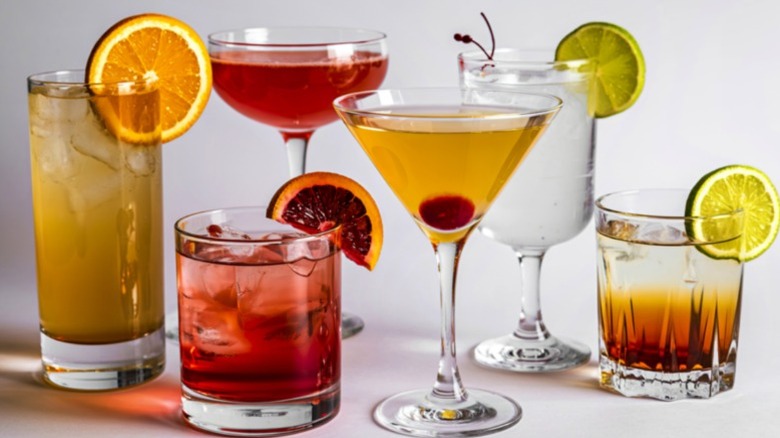When You Should Be Double-Straining Your Cocktails
Most cocktails crafted at home or the bar go through a filtering process before being poured into a serving glass. In some cases, the cocktail requires a second round of filtering, known as double straining. "Double straining removes even more particles (ice, fruit, pulp, herbs, muddled items) than a basic straining achieves," says Sean Satterlee, beverage director at The Betty and St. Julep, two culinary concepts located in the Kimpton Sylvan Hotel in Atlanta, Georgia.
The double-straining process allows the second fine-mesh strainer to remove anything that the initial strainer doesn't catch. According to Difford's Guide, the second strainer, called a fine-mesh strainer, can collect up to eight milliliters of ice chips and fruit fragments, which can save a cocktail from becoming a diluted version of itself.
"Drinks done in a yarai glass like an old fashioned don't need to be double-strained. Cocktails that are served up, muddled, or with a foaming agent should be double strained," Satterlee told The Takeout. "Pisco Sours, daiquiris, pretty much every citrus-based cocktail that uses a shaker would benefit from a double strain."
How to double-strain a cocktail
To double-strain a cocktail, you'll need two specific tools on your bar cart. "You'll need a Hawthorne strainer and a fine mesh strainer," Satterlee says. Start by pouring the cocktail ingredients into a shaker tin, and give it a good shake for about 30 seconds. "Remove the top shaker tin, and place the Hawthorne strainer over the bottom tin," Satterlee explains. "Place a fine mesh strainer over a prepared glass, and pour the shaker tin over the fine mesh strainer."
The final result is a cocktail with a luscious, creamy mouthfeel that a single-strain just can't achieve. Besides citrusy cocktails, the double-straining method is extremely helpful for cocktails that contain foaming agents like egg whites or aquafaba (the liquid found in a container of cooked chickpeas), like a Whiskey Sour. Double-straining is great for catching herb fragments and grains of sugar in a muddled drink, like a caipirinha, too.
When in doubt about whether or not to double-strain a cocktail, ask yourself if you'd be okay sipping on something with small bits of pulp or ice in it. If yes, do a normal single-strain with a shaker tin. If not, remove them using the double-straining technique.

